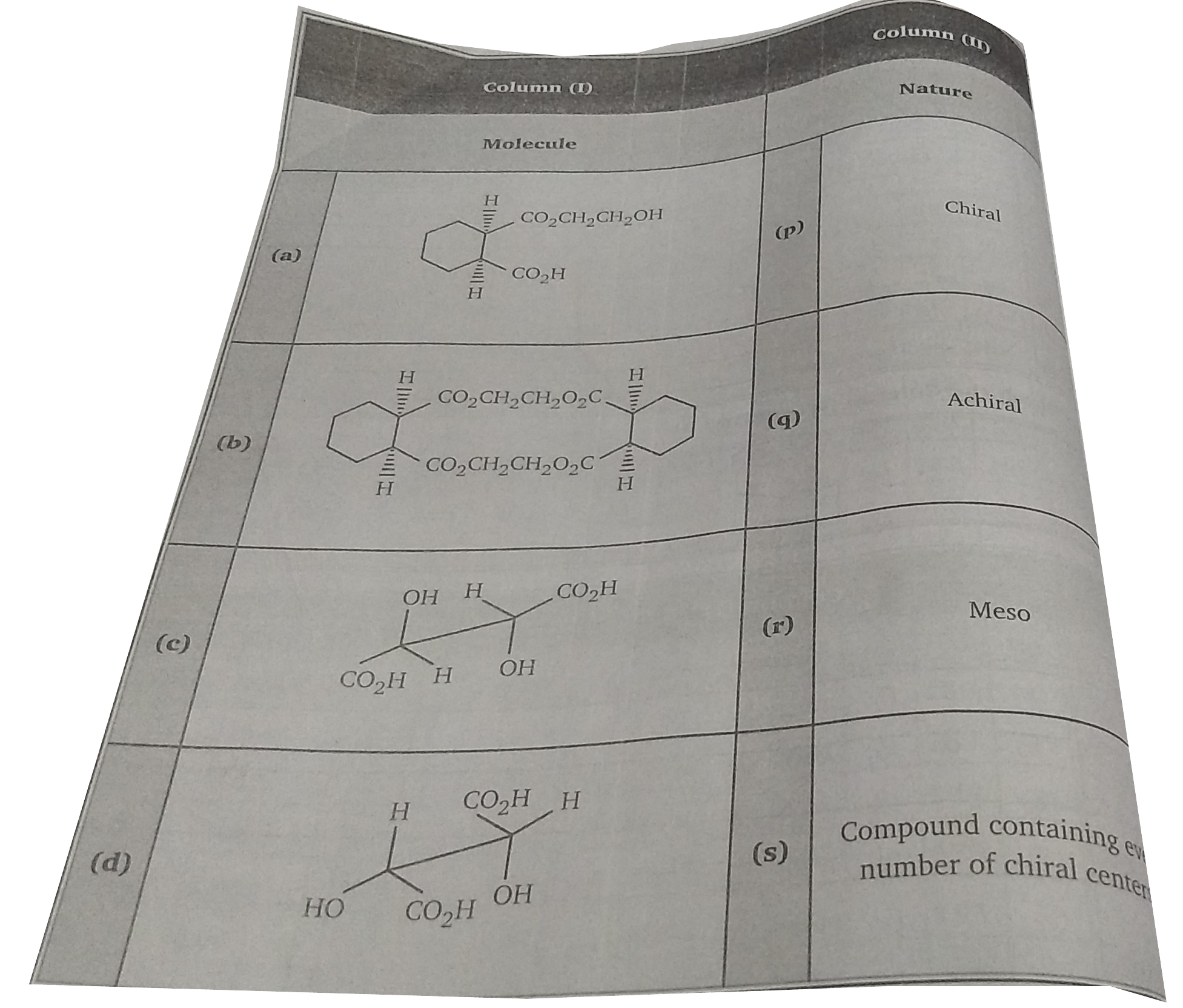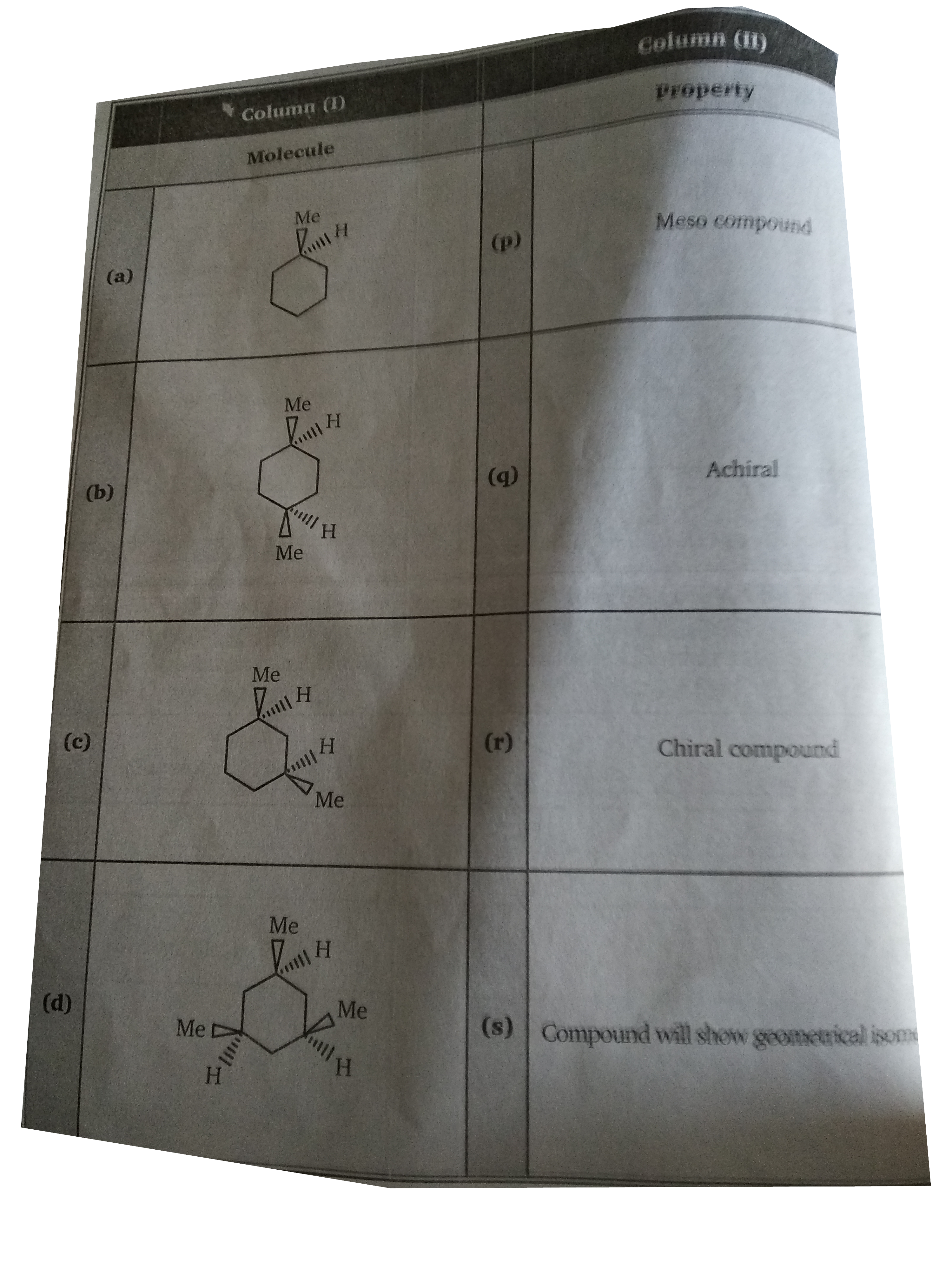Match the Column (I) and (II). (Matrix)
 Solution in Telugu
Solution in Telugu
The correct Answer is:a-q; b- q; s; c - p, q , s ; d -s
(a) Molecule has P.O.S. so optically inactive.
(b) Molecule has P.O.S. so optically inactive doesn.t has chiral centre so not meso and can show G.I.
(c) Molecule has P.O.S. and chiral centres so it is meso and can show G.I. 
(d) Molecule has P.O.S. and doesn.t has chiral centres but can show G.I.
Topper's Solved these Questions
- ISOMERISM (STRUCTURAL & STEREOISOMERISM)BOOK - MS CHOUHANCHAPTER - ISOMERISM (STRUCTURAL & STEREOISOMERISM)EXERCISE - LEVEL 2 (SUBJECTIVE PROBLEMS)
17 Videos
- ISOMERISM (STRUCTURAL & STEREOISOMERISM)BOOK - MS CHOUHANCHAPTER - ISOMERISM (STRUCTURAL & STEREOISOMERISM)EXERCISE - LEVEL 2 (SUBJECTIVE PROBLEMS)
17 Videos
- HYDROCARBONS (ALKYNES)BOOK - MS CHOUHANCHAPTER - HYDROCARBONS (ALKYNES)EXERCISE - Level -1
32 Videos
- IUPAC NAME BOOK - MS CHOUHANCHAPTER - IUPAC NAME EXERCISE - LEVEL-2 (SUBJECTIVE PROBLEMS )
1 Videos
Similar Questions
Number of chiral isomers are:

View SolutionNumber of chiral isomers are:

View SolutionComplete the following reaction

View Solution
When IUPAC name of following compound is given, then double bond and substituent gets respectively (x and y) number so the sum of (x + y) will be
View SolutionMatch the column (I) and ((II). (Matrix)

View SolutionMatch the column (I) and (II) .(matrix)

View SolutionMatch the column I and II. (Matrix)

View SolutionMatch the Column (I) and (II). (Matrix)

View SolutionMatch the column (I) and (II). (Matrix)

View SolutionMatch the column (I) and (II). (Matrix)

View SolutionMatch the column (I) and (II). (Matrix)

View SolutionMatch the column (I) and (II). (Matrix)

View SolutionMatch the column (I) and (II). (Matrix)

View SolutionMatch the column (I) and (II). (Matrix)

View SolutionMatch the column (I) and (II). (Matrix)

View SolutionMatch the column I and II. (Matrix)

View Solution
